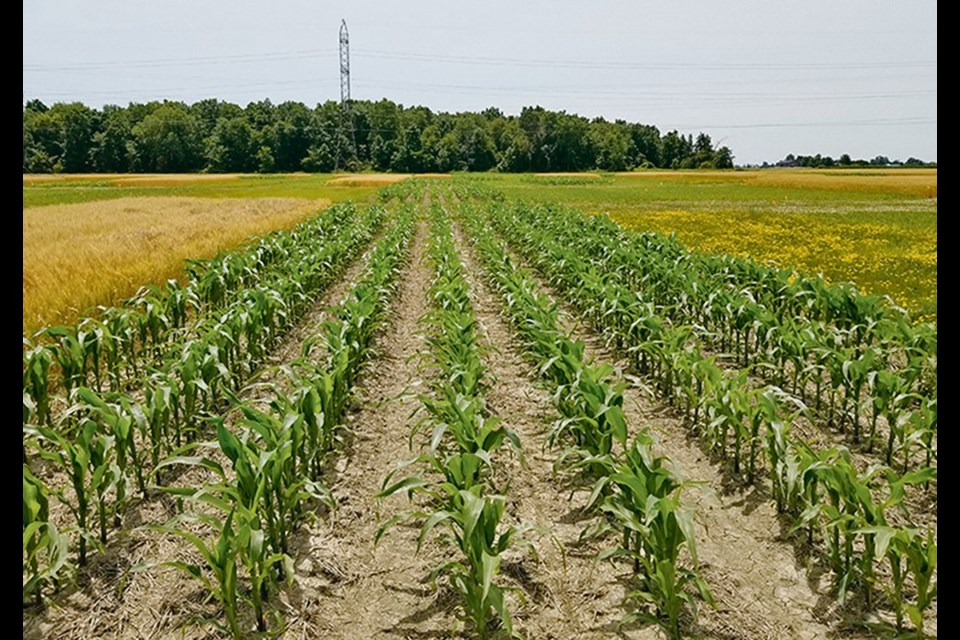WESTERN PRODUCER — Finding a 21-year continuous corn field is like a dream come true for Ontario plant researchers trying to get a firm grip on the much-bandied-about term soil health.
Scientists know that soil health depends on a complex community of microbes, bacteria and fungi nutrients. These bugs prepare the soil to support plants.
Defining healthy soil and then quantifying that health is still beyond the reach of today’s science. However new opportunities, such as the 21-year-old corn field, help researchers in their quest to apply numbers to the concept of soil health.
As with any soil research, the results ultimately help farmers better manage their land, according to Lori Phillips, a scientist with Agriculture Canada.
“Understanding the management practices that lead to healthier soils will allow farmers to grow the same crops while reducing costly chemical inputs for fertilizer, pesticides and herbicides and protecting the environment,” said Phillips.
Phillips and her colleagues used the field, first planted to corn in 2001, as one component in their long-term study of different farming practices and their impacts on soil. They compared pastures to other fields planted in a typical corn and soybean rotation. Phillips documented how 18 years of continuous corn, soybeans or perennial grasses affected soil health.
Phillips said that another key component was a new system for measuring soil health factors, which could help other scientists grappling with the same questions. To find their answers, they had to first decide how to measure soil health.
In years past, this mostly meant how much organic matter is in soil. But organic matter changes slowly. Microbes change fast.
“Microbial communities could be considered the ‘canary in a coal mine’ for soil health. Measuring them quickly yet accurately is important.”
The scientists turned to a test called CNPS, which measures enzymes involved in carbon, nitrogen, phosphorus and sulfur nutrient cycles in the soil. CNPS produces a holistic measure of biological activity. They observed the variety of fungi and bacteria in the soil and the ratio between these groups of microbes.
The perennial grasses supported the healthiest soils. They had lots of biological activity and diverse microbes. They also hosted lots of fungi. The fields growing both a perennial grass and a legume called bird’s-foot trefoil were especially healthy. Fields constantly growing soybeans, another legume, came in last place. Corn fields were between the two.
“Legumes like bird’s-foot trefoil and soybeans produce their own nitrogen, a useful trait in agriculture. But that doesn’t always lead to stronger soils, especially for soybeans.
“People assume that soybean is a legume and legumes provide their own nitrogen through fixation, therefore soybean must be healthy for the soils. But most of the nitrogen gets taken away at harvest and what’s left behind is less useful.
“The problem is the cumulative effect of smaller roots, less residue returned to the soil, and residue that is returned gets broken down too quickly to be stable.”
The perennial systems had more fungi than the crop fields. Since the perennial grasslands are not cultivated, they had more time to build up strong microbial communities.
Intensively managed agricultural soils, with more frequent tillage and high fertilizer inputs, tend to be dominated by bacteria. In contrast, more sustainable management practices increase the overall number of fungi in soil. Fungi hold onto soil, thus reducing erosion.
The scientists learned that the new CNPS is a useful tool for capturing soil health data. By uncovering what kind of soil management produce healthier soils, the information can help farmers understand how to protect this vital resource.
“Agricultural management practices that reduce soil disturbance, reduce chemical inputs, and increase the amount of time the soil is covered by a living crop all contribute to improved soil biological health. Improved soil biological health will lead to more profitable and sustainable farms.”

